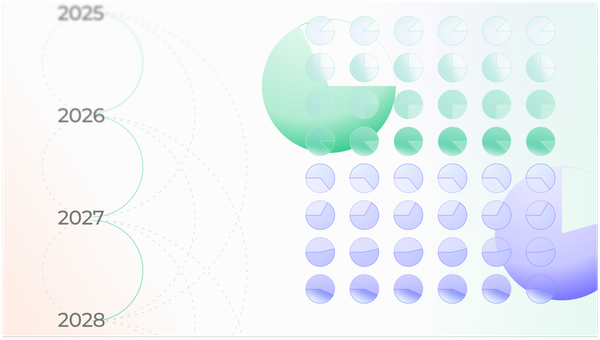How businesses and product leaders are future proofing UX so unexpected external changes are unable to impact their users.
No man is an island,
Entire of itself;
Every man is a piece of the continent,
A part of the main.
—John Donne
Similarly, technologies can’t exist in a vacuum - not apps, websites, or smart home gadgets. While business and product leaders strive for a world in which they have total control over how users interact with their business, external tech trends and market factors have a huge impact on user behaviors. Here are ways you can prepare to weather unexpected storms.
Your Top 5 Strategies for Future Proofing UX:
- Understand your audiences by developing strong user personas. Gain a deep understanding of exactly who your users are, what they like, what motivates them, their pain points and challenges.
- Create seamless experiences that drive brand loyalty. Building a feature-rich, easy-to-use product can keep people coming back, even if it may cost a little more.
- In times of uncertainty, move fast to improve ROI fast. When major changes are happening around you, time is of the essence.
- Lean into primary research when change is imminent. In times of uncertainty, understand your audiences’ perspectives.
- Budget or not, secondary research will provide helpful context. Conducting secondary research can be a lower-cost option to help you gather information and as a result, make sound decisions..
Case in Point: The Real Estate Market
This is, and has been, very apparent in the world of real estate apps. In a two-year time-span, the real estate industry was hit with several unforeseen challenges driven by uncontrollable external factors, the most significant being:
- Rising mortgage rates: Average 30-year mortgage rates ballooned from an average of 3.2% in December 2021 to 7.48% in December 2023, pricing many people out of homeownership. Many real estate app users are now casual browsers, not active buyers.
- Increasing construction costs: In 2021, building materials costs increased 18.9%, and, although cost increases have slowed, the cost of raw materials for construction has still not reached pre-pandemic levels.
- Rise and fall of short-term rentals: As platforms like Airbnb and VRBO increased in popularity, more properties were converted to short term rentals, peaking in 2020 during the first year of the COVID pandemic. However, recently short-term rentals have experienced a steep decline due to cost concerns from both hosts and guests as well as new regulations in major cities like New York, Seattle, and San Francisco that strictly limit short-term rental uses.
As part of our research on real estate mobile app UX and product experiences, we asked users what they thought the biggest factors impacting the market are, and here's what they are saying:
Interest rates (41%) and cost of materials (19%) were the leading reasons why users thought that the housing market remains in its current state, with fewer people able to buy and fewer sellers willing to run the risk of lower than expected returns. In particular, users indicate that high interest rates are impacting their purchasing plans and their app usage behavior.
“I am hoping interest rates on loans will lower and that housing prices will drop some since they are very high in my area. It makes it frustrating looking at houses when I know I am not in a position to make an offer at this point, so I just have to be patient and wait for the right time.”
—David, Gen X, Georgia
“Interest rates make the mortgage on most houses completely unaffordable. I'd need a much more massive down payment to even stand a chance. My town is also not one that seems to want to invest in small, affordable homes. Massive apartment complexes tend to thrive, as well as large, expensive new builds.”
—Amber, Millennial, New York
We asked users to browse real estate apps as they normally do, and several pointed out that high prices coupled with high interest rates mean they remain stuck in “research mode.”
“Prices are still very high, so I am just researching!”
A Zillow user says that he is only researching homes as houses are still not within budget.
—Nicholas, Gen X, Florida
Although these examples come from the real estate world, many industries are susceptible to outside influences such as regulatory changes, overall economic health, and major disruptions from new competitors (like how ChatGPT has rocked the tech world).
How Pulse Labs Helps You Navigate Changing Markets
Is your business in the midst of uncertainty? Let Pulse Labs help by future proofing UX for your business! FlightRecorder™ is a new solution specifically for optimizing app UX with the help from actual users of your product.
Our UXResearch™ platform and services support a variety of primary research approaches including unmoderated video research, moderated interviews, and competitive benchmarking to help you understand perceptions and usability from real world, validated participants.
Pulse Labs IQ™ conducts primary research on user behavior across a variety of technologies, and has a bi-weekly newsletter with insights from industry leaders delivered directly to your inbox.
Want to learn more about the tools we use for our research and how they can help you power your product design and user experience?
Stay tuned for more insights from Pulse Labs IQ™ and sign up for our newsletter.








Member discussion